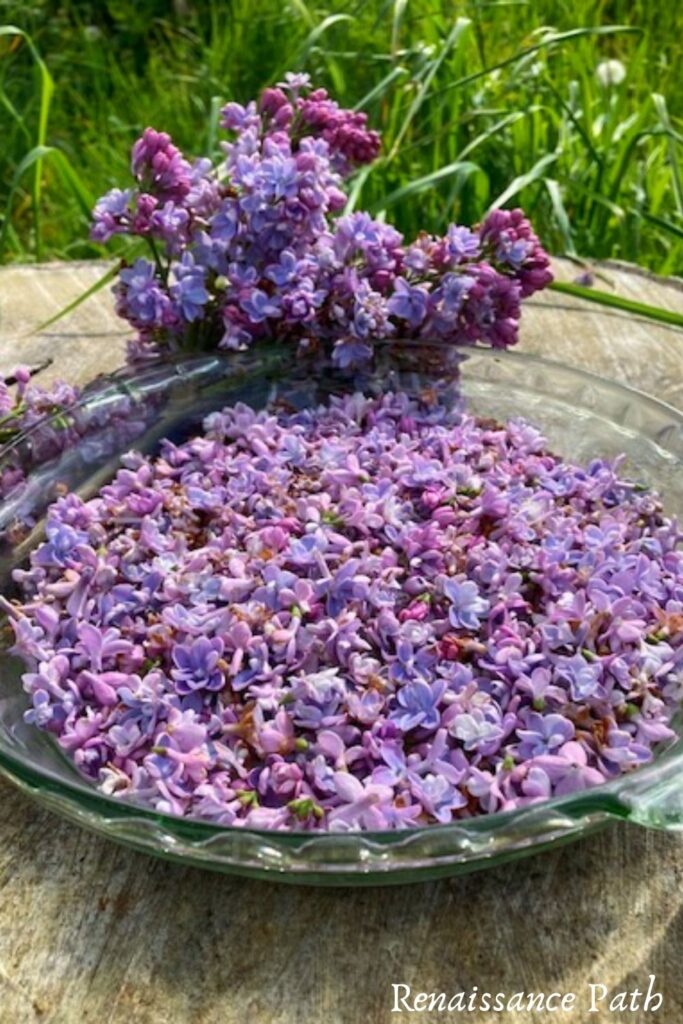
Some of the links on this page contain affiliate links. Renaissance Path is a participant in the Amazon Associates Program, an affiliate advertising program that provides a way for websites to earn advertising fees by linking to products. We only link to products we normally use and trust. When you purchase an item through the link we receive a small commission at no additional cost to you. This helps pay for the costs associated with running this blog. Your support is greatly appreciated. Thank You!
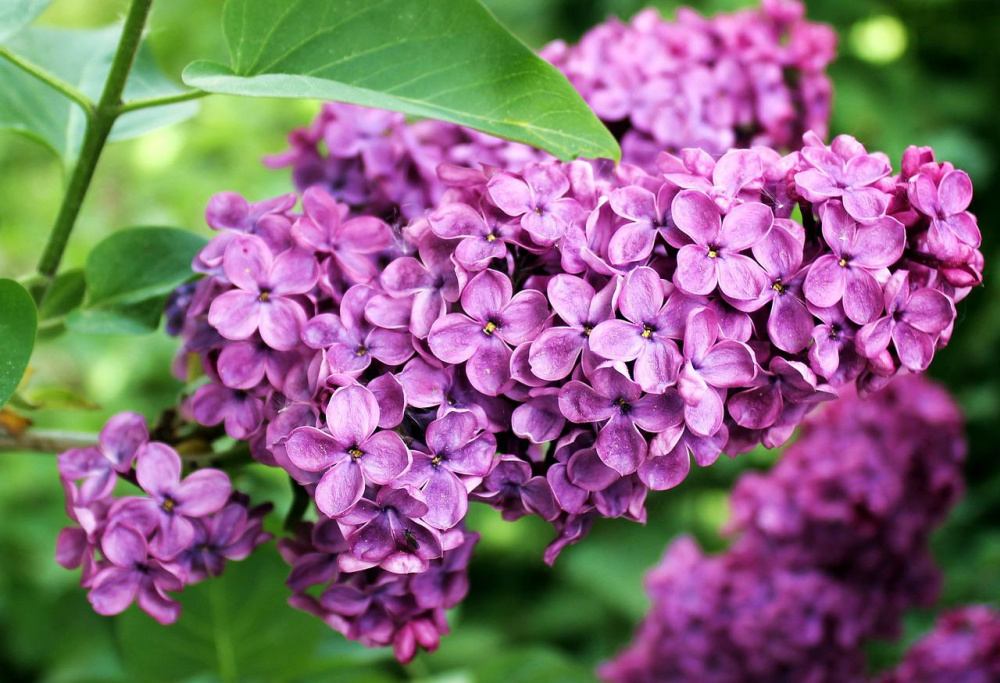
How to Make a Lilac Enfleurage
Do you love the smell of lilacs as much as I do? Well, you are in for a treat. A really great way to capture that wonderful scent yourself is to make a lilac enfleurage.
What is an enfleurage? It is an old-fashioned way of using fats like rendered lard or beef fat(tallow) to absorb the aromatic scents from flowers. It is done by pressing flower petals into the fat and leaving them for a few days, then removing the spent flowers and adding more flowers, pressing those down and leaving the flowers again for a few days. You do this several times. The more times you do this the stronger the scent.
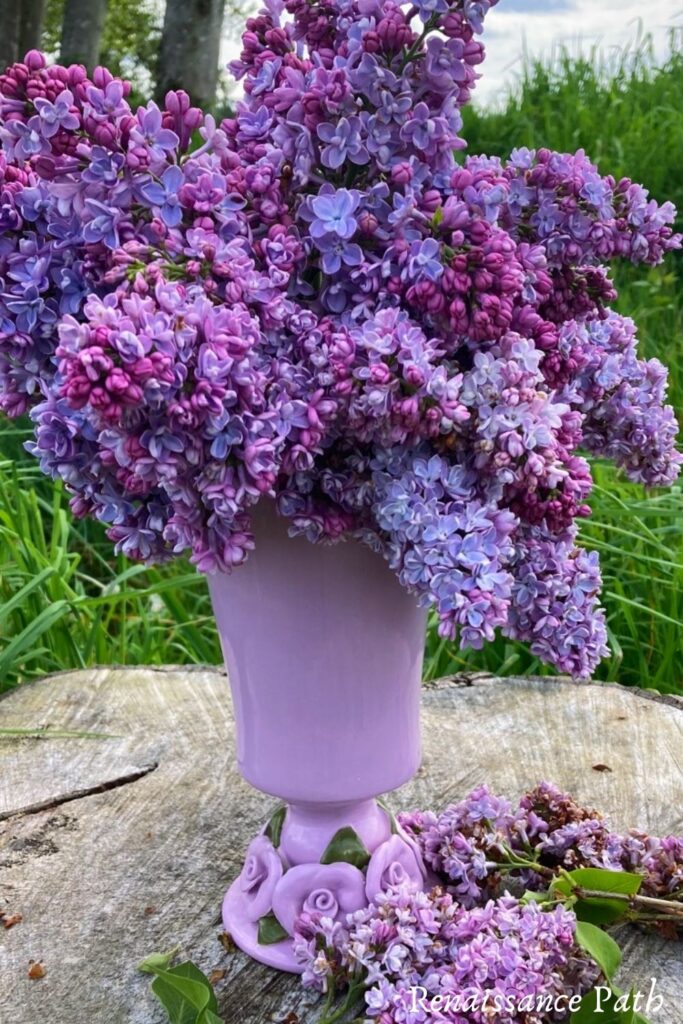
History of Enfleurage
The enfleurage method has been around since ancient times and was used by the Romans and Greeks. Enfleurage is a process where flower petals are placed on top of fats that are solid at room temperature, the petals are pressed down against the fat for a few days. The fat absorbs the scent of the flower and then the process is repeated again until the fat has reached the desired scent saturation.
Once you are done with the process and flowers are pulled off you are left with a scented fat, this is called a pomade. Now you’re probably thinking isn’t a pomade for hair? Actually, depending on the ingredients pomade can be for the skin also.
There are two types of enfleurage, hot enfleurage, and cold enfleurage.
In cold enfleurage, plates of glass that are framed(chassis)have an animal fat like tallow or lard spread all over them. Then flowers or petals are placed on top of the fat and left for days and then removed and then the process is repeated until the desired scent is reached.
In hot enfleurage, the fat is heated and the flowers are stirred in. After the flowers are spent they are strained off and more fresh flowers are stirred in. This process is believed to be the oldest method throughout history to preserve fragrant flowers and plant material.
Some flowers and plants are more delicate and can not withstand the heat and so the cold enfleurage is the best option.
Which Fats Can I Use







Supplies Needed
Glass baking dish or metal cookie sheet

Fat of choice

Lilacs
How to Make a Lilac Enfleurage
When you are deciding which lilacs to use know that the purple ones are the most fragrant. The best time to pick lilacs is in the late morning after the dew is gone. Make sure to let the lilacs sit for a while so all the insects can jump off. I usually give them a little shake as well. After that, I pull the lilac buds off the stems. You want to make sure to get off all the green parts.
You will need to warm your fat a bit to pour into your glass dish and spread it evenly.
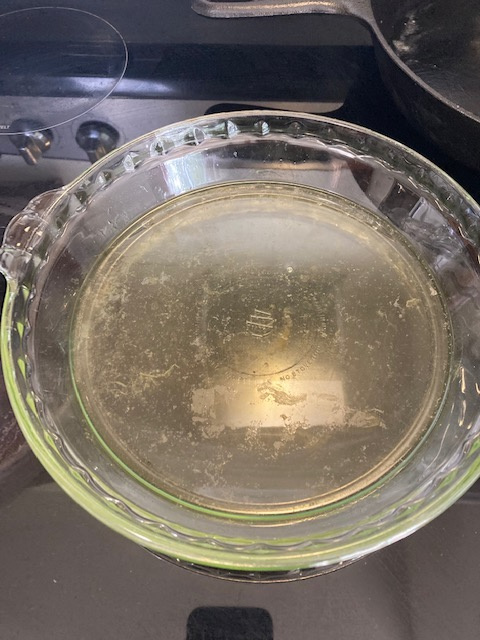
Once the fat has cooled and hardened you can add your flower petals. Some people will say you need to place your flower buds face down. I feel this isn’t that necessary because I wrap the glass dish in saran wrap, this helps trap the scent so the fat absorbs it better. You need to cover the fat in flower buds. You shouldn’t be able to see any fat.
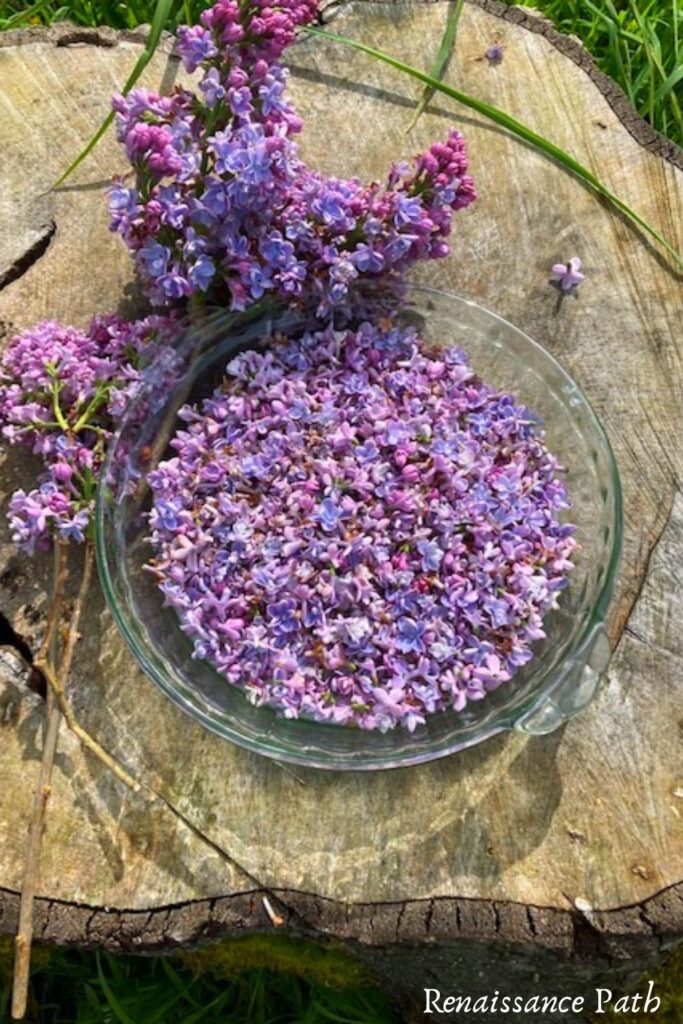
Once this is done cover the whole dish in saran wrap.

Then press another dish on top to press all the air out.
Then wrap saran wrap all the way around the dish so the scent can not escape. Leave for 2-4 days and remove flowers and add a new layer of fresh flowers and rewrap again.
You can keep repeating this process as many times as you like until you reach the desired scent. Some people will do it for several weeks until lilacs are no longer in bloom.
Once the process is done you can rebottle the fat, it is now considered a pomade.
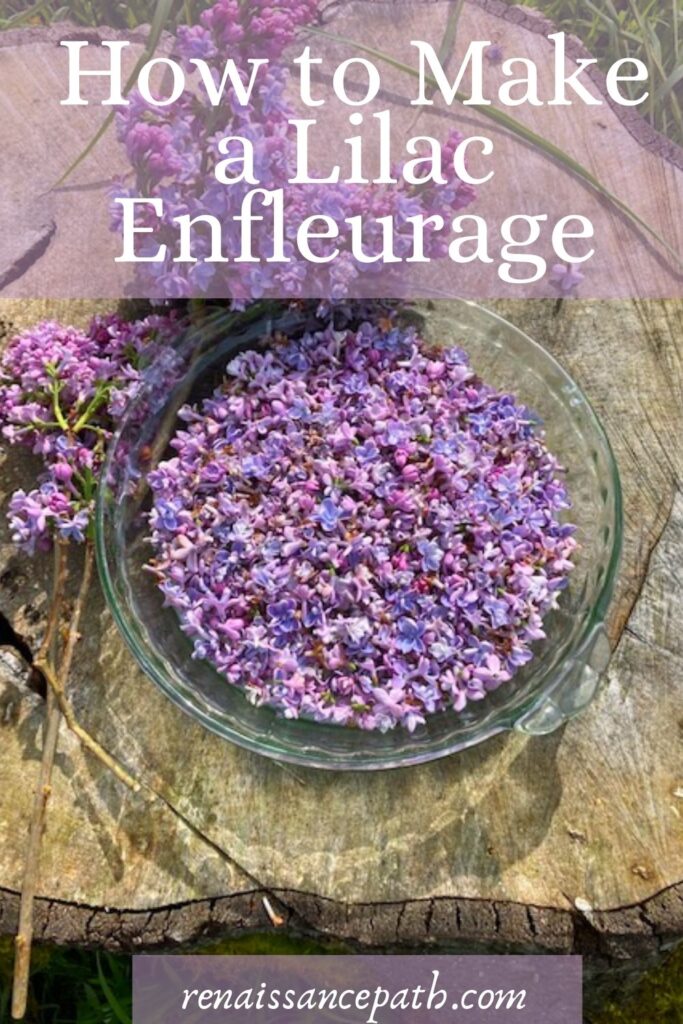
Ways to Use a Pomade
You can use the lilac pomade for hair.
Use can use it as a deodorant.
As perfume.
You can tint the pomade and make a rouge or lip balm.
Whenever I make lilac enfleurage I feel so much joy, I feel like I have been transported back in time. To know I’m making something women have made for centuries. It is time-consuming but there is something about it I like, I can’t really describe it. Have you ever made lilac enfleurage? Let me know in the comments.
Much Love,
Melissa
This website is for educational purposes only. The information provided by Renaissance Path is not intended to diagnose, treat, or cure any diseases. Please consult a qualified health care professional for medical advice.
If you enjoy making your own infused oils check out my post on making Dandelion Oil.
Is it difficult to remove the layer of flowers from the tallow? In my mind it seems impossible. My lilac is blooming now and I’d love to capture its lovely scent!
I placed my flowers upside down in the fat, and after sitting covered 24-48 hours by a cotton cloth I found they had dried and could easily be plucked out by the tubular flower bases sticking up. Flowers that were pushed into the fat I grabbed with an old pair of tweezers.
I wouldn’t say this has been a quick method, but I didn’t have a lot of lilacs to work with each day and wanted to maximize the coverage per flower.
It is not difficult. I use tweezers. I hope you get a chance to try this method.
Would it be possible to do a hot eflureage with lilacs?
You can do a hot enfleurage it is a bit more labor intensive. But some people prefer that method because it catches the scent better. Let me know if you try a hot enfleurage in the future. Take care.
Thank you for sharing this!
Curious, how long do you say it safely lasts for?
I recently watched “Purfume”. It’s an interesting movie about a natural “nose” who in the end found enfleurage as his prefered method to remove aromas he desired. I had never hear of it and was interested. Thanks
WHY DO THE PETAALS NEED TO BE REMOVED? WHY NOT JUST LET THEM IN THE FAT?
Their oils and water soluble scent chemicals are infused into the fat and once spent, you will need to replace them to infuse more into the fat to achieve the desired scent profile. If left in the fat on the last round, I’ve found that they stay preserved for awhile but do tend to decomp eventually, perhaps because of the water content in the petals. If not adding additional preservatives to the pomade, this is why you want to remove the flowers in the end steps. So your batch does not capture the scents of decomposing flowers.
This is so cool! What a fun way to use this!
Thanks for sharing! How long is it good for?